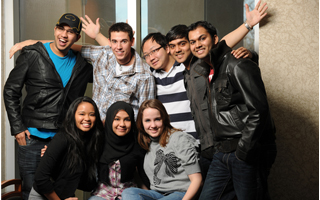
by Dr. Di Ann Sanchez | Apr 9, 2016 | HR Trends, Human Resources, Talent Management
Cultural intelligence: an outsider’s seemingly natural ability to interpret someone’s unfamiliar and ambiguous gestures the way that person’s compatriots would (Earley & Mosakowski, 2004).
Companies also have cultures that are often distinctive. Employees learn how to decipher the cultural code of their company over time through historical stories, environmental clues, geographic regions, meetings, etc. Organizational departments can also have their unique culture as well.
“Cultural intelligence is related to emotional intelligence, but it picks up where emotional intelligence leaves off. A person with high emotional intelligence grasps what makes us human and at the same time what makes each of us different from one another. A person with high cultural intelligence can somehow comprehend a person’s or group’s behavior those features that would be true of all people and all groups, those peculiar to this person or this group, and those that are neither universal nor idiosyncratic (Earley & Masakowski, 2004)”. One critical element that cultural intelligence and emotional intelligence do share is, in psychologist Daniel Goleman’s words, “a propensity to suspend judgment—to think before acting.” People who are somewhat detached from their culture can more easily adopt the mores and even the body language of an unfamiliar host.

by Dr. Di Ann Sanchez | Apr 4, 2016 | HR Trends, Human Resources, Talent Management
Video recruiting is the 21st-century method during the hiring process at organizations. Video interviewing take two forms—live conversations between the recruiter or hiring manager and the candidate. Live interviews give hiring managers an opportunity to see and...

by Dr. Di Ann Sanchez | Feb 22, 2016 | HR Trends
Experts in Business (Future of Work Symposium) have several predictions for the next few years that may change the face of the workplace. Here they are:
- Technology – will be positive for business because it facilitates communication and collaboration on a daily basis. This can result in a more engaged and productive workplace.
- Freelancers – the rise of the contingent workforce will change the old employer-employee relationships. Freelancers will work the “gig economy” to build skills and experience while determining whether they are interested in a company employment situation. People are looking to supplement their incomes, consider themselves entrepreneurs and are searching for flexible work arrangements. In fact, according to a study by Elance-oDesk, Freelancing in America: A National Survey of the New Workforce, 53 million Americans are now freelancing. And 69 percent say technology is aiding their ability to do so.
- Business intelligence – currently 39% of organizations are doing some form of business intelligence analytics. Data-driven insights are imperative for organizations to remain competitive.
- Emerging economies – Asian and Middle Eastern markets continue to increase, and global talent will be a shortage due to the aging workforce. Companies will be looking to upskill workers to maintain competitive advantage, and those skilled employees can expect to see wages rise as talent shortages in certain regions drives salaries up.
- Millennials – the Gen Y factor is a live and well. It is anticipated by 2020, 50% of the Global Workforce will be Millennials. This will change the face of the workforce and well as the markets. The Gen Y’ers are already changing the workplace but will do so by the sheer momentum of their numbers.
- Leadership – leaders have traditionally been selected based on experience, company knowledge, and loyalty. This will not be the 21st criteria for organizations. Organizations are looking for more inspirational and collaborative leaders. Leaders will be expected to communicate (both in person and through technology) more with employees and have less hierarchal management style.

by Dr. Di Ann Sanchez | Feb 12, 2016 | DAS HR Consulting Company News, HR Compliance, HR Trends, Human Resources
The Results Are In For 2016! Just in Time for Valentine’s Day. Vault conducts an office romance survey every year, and the results are always surprising. Only 6% of respondents believed that NO office romances were appropriate. Furthermore, co-workers have opinions...

by Dr. Di Ann Sanchez | Dec 20, 2015 | HR Trends
The Hispanic Millennial Project (HMP) is a massive five-part study co-produced by market researcher ThinkNow and ad agency Sensis found Latinos Millennials are the most valuable segment of TV watchers in the millennial generation!
The Research found some interesting facets of millennial Latinos that make them a uniquely valuable group of TV watchers.
While non-Hispanic white millennials still drive the box office, with an even third having watched a movie in a theater in the past six months, Latino millennials are right behind them, with 30 percent reporting the same. But when it comes to TV, millennial Latinos are by far the main driver of the most valuable kind of activity: watching it live.
Of all the millennial groups (White, Black, Latino, and Asian-American) studied by HMP, Latinos were the most likely to watch live television sometimes, and also as a regular habit.





